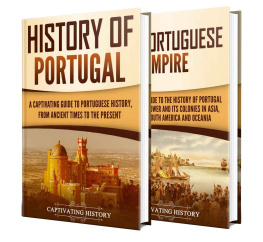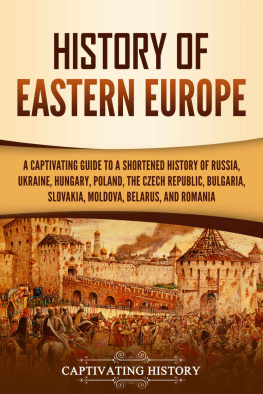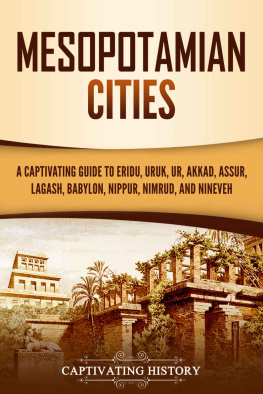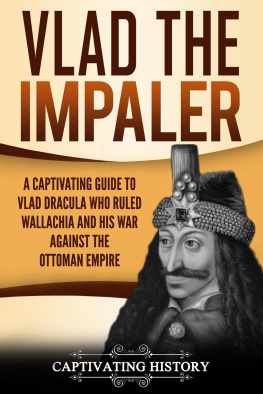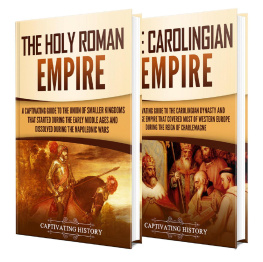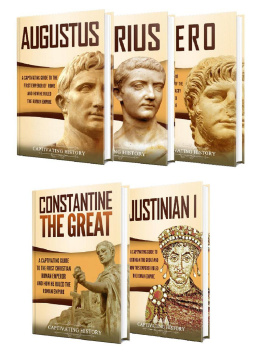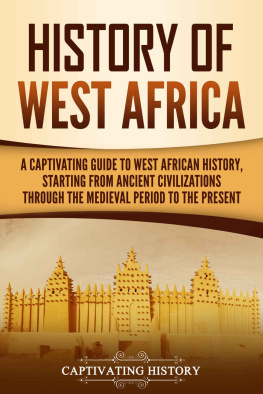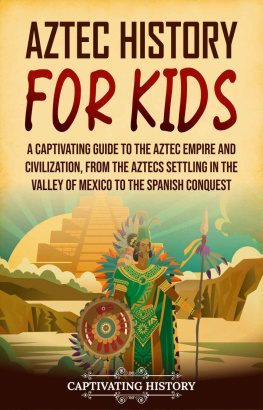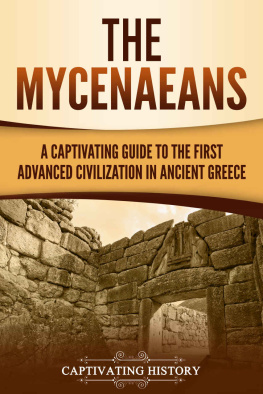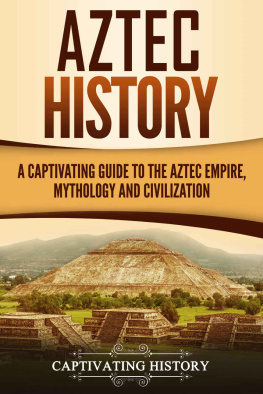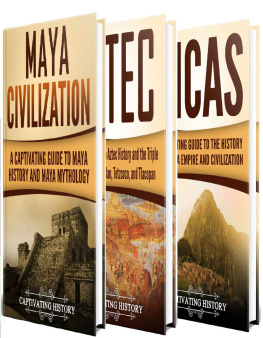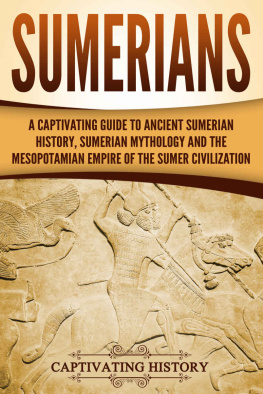Captivating History - Ancient Civilizations for Kids: A Captivating Guide to the Maya Civilization, the Inca Empire, and Aztec History for Children
Here you can read online Captivating History - Ancient Civilizations for Kids: A Captivating Guide to the Maya Civilization, the Inca Empire, and Aztec History for Children full text of the book (entire story) in english for free. Download pdf and epub, get meaning, cover and reviews about this ebook. year: 2022, genre: History. Description of the work, (preface) as well as reviews are available. Best literature library LitArk.com created for fans of good reading and offers a wide selection of genres:
Romance novel
Science fiction
Adventure
Detective
Science
History
Home and family
Prose
Art
Politics
Computer
Non-fiction
Religion
Business
Children
Humor
Choose a favorite category and find really read worthwhile books. Enjoy immersion in the world of imagination, feel the emotions of the characters or learn something new for yourself, make an fascinating discovery.
- Book:Ancient Civilizations for Kids: A Captivating Guide to the Maya Civilization, the Inca Empire, and Aztec History for Children
- Author:
- Genre:
- Year:2022
- Rating:3 / 5
- Favourites:Add to favourites
- Your mark:
- 60
- 1
- 2
- 3
- 4
- 5
Ancient Civilizations for Kids: A Captivating Guide to the Maya Civilization, the Inca Empire, and Aztec History for Children: summary, description and annotation
We offer to read an annotation, description, summary or preface (depends on what the author of the book "Ancient Civilizations for Kids: A Captivating Guide to the Maya Civilization, the Inca Empire, and Aztec History for Children" wrote himself). If you haven't found the necessary information about the book — write in the comments, we will try to find it.
Captivating History: author's other books
Who wrote Ancient Civilizations for Kids: A Captivating Guide to the Maya Civilization, the Inca Empire, and Aztec History for Children? Find out the surname, the name of the author of the book and a list of all author's works by series.
Ancient Civilizations for Kids: A Captivating Guide to the Maya Civilization, the Inca Empire, and Aztec History for Children — read online for free the complete book (whole text) full work
Below is the text of the book, divided by pages. System saving the place of the last page read, allows you to conveniently read the book "Ancient Civilizations for Kids: A Captivating Guide to the Maya Civilization, the Inca Empire, and Aztec History for Children" online for free, without having to search again every time where you left off. Put a bookmark, and you can go to the page where you finished reading at any time.
Font size:
Interval:
Bookmark:
Ancient Civilizations for Kids
A Captivating Guide to the Maya Civilization, the Inca Empire, and Aztec History for Children
Copyright 20
All Rights Reserved. No part of this book may be reproduced in any form without permission in writing from the author. Reviewers may quote brief passages in reviews.
Disclaimer: No part of this publication may be reproduced or transmitted in any form or by any means, mechanical or electronic, including photocopying or recording, or by any information storage and retrieval system, or transmitted by email without permission in writing from the publisher.
While all attempts have been made to verify the information provided in this publication, neither the author nor the publisher assumes any responsibility for errors, omissions, or contrary interpretations of the subject matter herein.
This book is for entertainment purposes only. The views expressed are those of the author alone, and should not be taken as expert instruction or commands. The reader is responsible for his or her own actions.
Adherence to all applicable laws and regulations, including international, federal, state, and local laws governing professional licensing, business practices, advertising, and all other aspects of doing business in the US, Canada, UK, or any other jurisdiction is the sole responsibility of the purchaser or reader.
Neither the author nor the publisher assumes any responsibility or liability whatsoever on the behalf of the purchaser or reader of these materials. Any perceived slight of any individual or organization is purely unintentional.
Table of Contents
A Captivating Guide to the Maya Civilization, from the Olmecs through the Founding of Teotihuacan in Ancient Mesoamerica to the Spanish Conquest

Get your Indiana Jones gear ready for this adventure! We are going on a journey to the jungles of Mesoamerica (that is the term used for Central America, or the bit that connects the continents of North and South America) to visit the splendid sights and sounds of the ancient society of the Maya people. Although many of their once splendid cities lie buried deep beneath the jungles of Central America, explorers have rediscovered and excavated (to dig out) several of these. With the help of modern technology and equipment, we now know that the Mayas ancient cities with their rural suburbs were much larger than the cities of many other civilizations (societies) across the world at that time.
Oh, and dont forget your whip and your sturdy ankle boots to tuck your explorer pants into because we may meet the spirits of snakes and jaguars in the jungle! Just kidding, of course, but the ancient Maya honored these animals as some of their many gods, so maybe we should be on the lookout for them.
Todays trip must rather be undertaken with the help of this book,
its wonderful pictures, and your imagination of a lost city or two!
Ever since discovering the first huge structures built by the Mayans, historians, and researchers have been trying to figure out why and how this mighty empire came to its end. When the Spanish invaders met the Maya people around five hundred years ago, they were living in small tribal villages scattered across Central America. Their cities were just simply left deserted, and the reason is still a mystery to us.
In this book, we are going to discover how these ancient Native Americans built massive stone structures like palaces, temples, tombs, ball courts, earthen pyramids, and more, all linked by paved highways - and they did all that without ever inventing the wheel. They also did not use beasts of burden! It must have been awfully hard work indeed.
The Mayas are seen as one of the five founding civilizations in the world. This means that they are one of the very few civilizations that fully developed their own writing system. Can you imagine how clever that is figuring out how to write symbols so that another person can understand your message?
Unfortunately, only four of their written books (which we call codices ) survive today. Hmm, dont you wonder why that is? This book will tell you about that.
We will also find out where the Maya came from, where they are today, how clever they were with mathematics and astronomy (the study of the stars and planets), what accurate calendars they were able to make, and much more.
Got your hats? Got your imagination? Come on, lets get on with it!

Map of the Olmec heartland

Olmec Stele with Numbers, Veracruz, 600-100 BC
The humid climate, enough water, and fertile (full of minerals) soil of the lowlands in the south and central areas of the Gulf of Mexico were ideal for hunter-gatherers to start growing their food from the seeds of wild plants. This domestication (making it suitable for home use) of wild plants allowed them to settle in one place all year round. By around 1300 BCE (Before Common Era or before Christ was born) groups of hunter-gatherers had already developed small permanent societies in this region. Although traces of the Maya people predate many of the groups that settled in this area, the Olmec people developed into a booming society before them, between 1400 and 300 BCE, with the first Mesoamerican city built by the Olmecs around 1150 BCE. They even started a writing system, as we can see from an example of their numbers on a stele in a museum in Veracruz, Mexico.
The Olmecs influenced every society after them in Mesoamerica and parts of South America, including the Maya. Scholars are not exactly sure where they came from or when they developed into a complex or high-level civilization, but their main village had grown into a city by around 1150 BCE. Today, archaeologists call this rediscovered city San Lorenzo . As you probably already know, archaeologists are the scientists who investigate and dig up old places to discover their history and secrets.
Just like the real name of the Olmec people, the locations and names of their cities and cultural centers were forgotten over time. Scholars have given their rediscovered cities new names. Most of what we know about the Olmecs comes from later cultures and some well-reasoned guesswork and ideas based on archaeological excavations and comparisons of stories from later cultures. Their cultural and material legacy spread everywhere because the Olmecs traded all over with all sorts of goods, but especially with rubber, which they made from rubber trees and vine juice. The later Aztecs even named them Olmec , which means rubber people in the Aztec language.
Talk about guessing ! This is one of the exciting things about the study of ancient history. There are always many clever and well-thought-out ideas involved in this guessing game when you are ready to discover something new or explore a better idea about how or why something happened in the past. In the case of the Olmecs, we have a little help, though. Archaeologists and historians can understand and figure out a lot about their history and influence because they left behind well-made sculptures, reliefs (wall carvings), murals (wall paintings), and some writing on stone surfaces.
We are learning a lot of new words today, arent we?
San Lorenzo did not have a large population living inside the city. People lived in the surrounding areas where they made things like pottery. And they planted crops such as cotton, beans, squash, and corn which again tells us that there was a class structure . The elite, like rulers and priests and important people, probably dwelt in the city. Peasants, manufacturers, and farmers lived around the city. The city was the cultural and religious center. This pattern is repeated in their other cities that have been discovered so far.
Font size:
Interval:
Bookmark:
Similar books «Ancient Civilizations for Kids: A Captivating Guide to the Maya Civilization, the Inca Empire, and Aztec History for Children»
Look at similar books to Ancient Civilizations for Kids: A Captivating Guide to the Maya Civilization, the Inca Empire, and Aztec History for Children. We have selected literature similar in name and meaning in the hope of providing readers with more options to find new, interesting, not yet read works.
Discussion, reviews of the book Ancient Civilizations for Kids: A Captivating Guide to the Maya Civilization, the Inca Empire, and Aztec History for Children and just readers' own opinions. Leave your comments, write what you think about the work, its meaning or the main characters. Specify what exactly you liked and what you didn't like, and why you think so.


